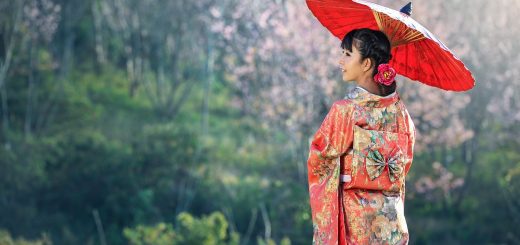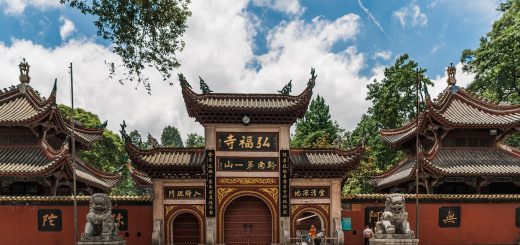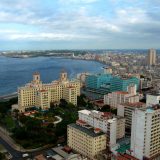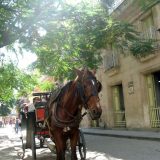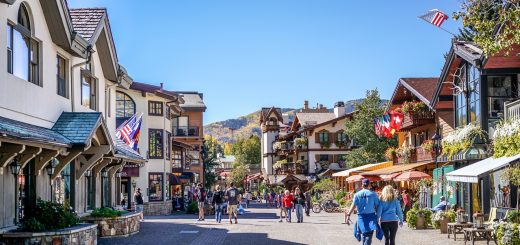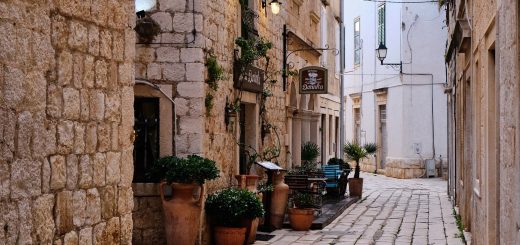Kyoto
by admin · April 13, 2023
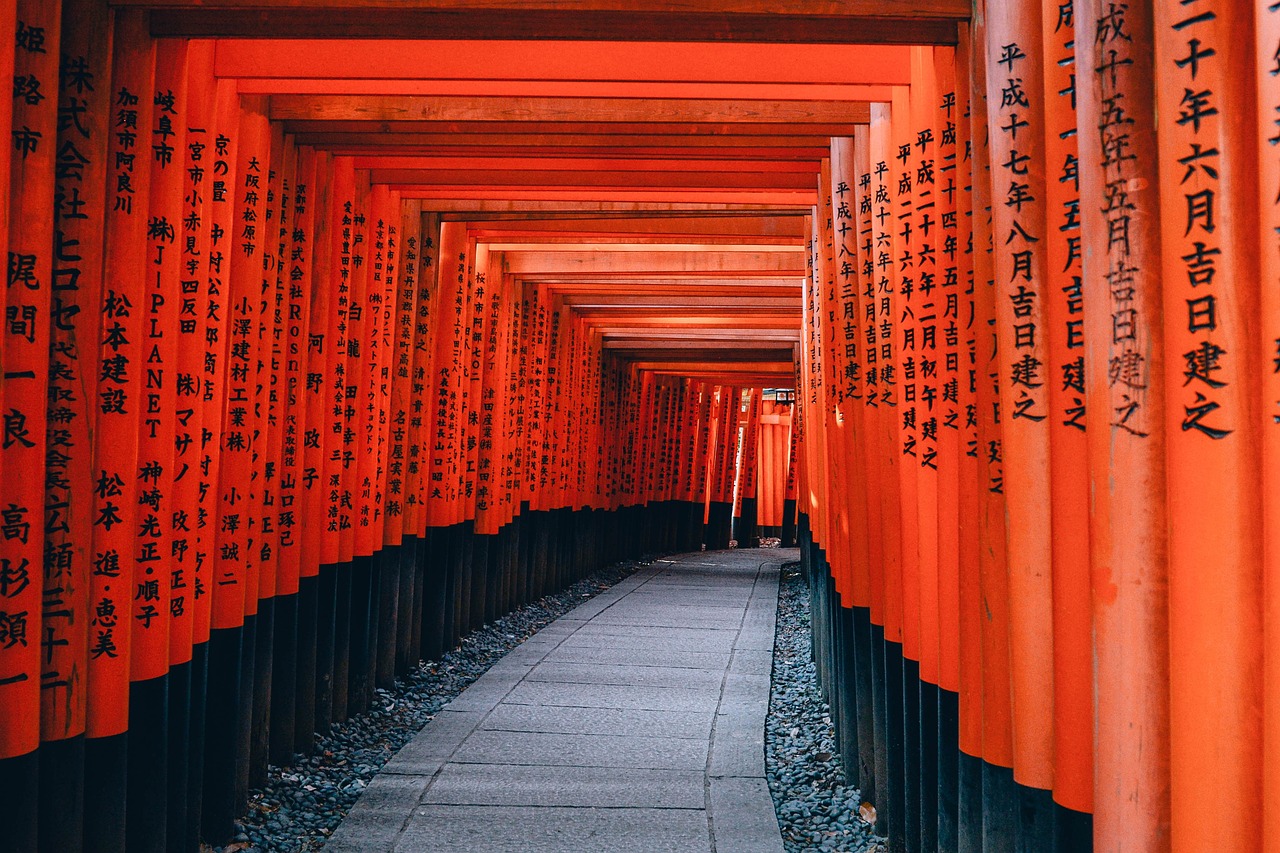
Discover the Timeless Charm of Kyoto: A Guide to the City’s Best Attractions, Cuisine, and Culture
Kyoto is a city of timeless charm, steeped in history and tradition. From its ancient temples and stunning gardens to its rich culinary scene and unique culture, Kyoto offers something for every traveler. Here is a guide to the best attractions, cuisine, and culture that Kyoto has to offer.
Attractions and Landmarks:
- Fushimi Inari Taisha: This stunning Shinto shrine is one of the most popular attractions in Kyoto. Known for its thousands of bright orange torii gates, it is a must-see for any visitor to the city.
- Kiyomizu-dera: This ancient temple, founded in 778, offers breathtaking views of Kyoto from its hilltop location. Be sure to visit the Otowa waterfall, where visitors can drink the water for good luck.
- Arashiyama Bamboo Grove: This beautiful bamboo forest is a peaceful escape from the city. Take a stroll through the towering bamboo stalks and enjoy the tranquility.
- Nijo Castle: This UNESCO World Heritage site was built in the 17th century and served as the residence of the Tokugawa shoguns. Be sure to check out the stunning wall paintings and intricate carvings inside the castle.
- Gion District: This historic neighborhood is known for its geishas, traditional teahouses, and beautiful architecture. Take a stroll through the winding streets and experience the old-world charm of Kyoto.
Architecture:
Explore Kyoto’s Temples and Shrines
Kyoto is home to over 2,000 temples and shrines, each with its own unique history and significance. Here are a few must-visit sites:
- Kiyomizu-dera: A UNESCO World Heritage site and one of Kyoto’s most famous landmarks, Kiyomizu-dera offers stunning views of the city from its wooden veranda.
- Fushimi Inari-taisha: Famous for its thousands of vermillion torii gates, Fushimi Inari-taisha is a Shinto shrine dedicated to the god Inari. Visitors can hike through the gates and up the mountain for stunning views.
- Kinkaku-ji: Also known as the Golden Pavilion, Kinkaku-ji is a Zen Buddhist temple covered in gold leaf. It is surrounded by a beautiful garden and a pond.
- Ryoan-ji: A Zen temple famous for its rock garden, which consists of 15 rocks arranged in a pattern on a bed of white gravel.
- Ginkaku-ji: Also known as the Silver Pavilion, Ginkaku-ji is a Zen temple with a beautiful garden and a sand cone that is said to symbolize Mount Fuji.
Experience Kyoto’s Traditional Culture
Kyoto is the cultural capital of Japan, and visitors can experience traditional Japanese culture in a variety of ways.
- Tea Ceremony: The Japanese tea ceremony is a traditional ritual that involves the preparation and serving of matcha (powdered green tea). Visitors can participate in a tea ceremony at various locations throughout Kyoto.
- Kimono Rental: Dress up in a traditional Japanese kimono and explore the city like a local. Many rental shops offer hair and makeup services as well.
- Maiko Experience: Maiko are apprentice geisha, and visitors can enjoy an evening of traditional entertainment, including music, dance, and games, at various teahouses throughout Kyoto.
- Ikebana: Ikebana is the Japanese art of flower arranging. Visitors can take classes to learn the basics of this beautiful art form.
- Calligraphy: Japanese calligraphy is a form of artistic writing that involves using a brush and ink to create characters. Visitors can take classes to learn the basics of this traditional art form.
Enjoy Kyoto’s Cuisine
Kyoto is known for its traditional Japanese cuisine, including kaiseki, a multi-course meal that showcases the season’s freshest ingredients. Here are a few must-try dishes:
- Yudofu: Tofu boiled in a simple broth and served with dipping sauce.
- Katsu: Breaded and fried pork or chicken served with tonkatsu sauce.
- Okonomiyaki: A savory pancake made with flour, eggs, cabbage, and a variety of toppings.
- Soba: Thin buckwheat noodles served hot or cold with dipping sauce.
- Matcha: Kyoto is famous for its matcha, which is used in a variety of sweets and desserts.
Best way to get around:
Kyoto has a well-developed public transportation system, making it easy to get around the city. The following are some of the best ways to get around Kyoto:
- Bus: Kyoto has an extensive bus network that covers almost all parts of the city. The buses are frequent, and the fares are relatively cheap. The Kyoto City Bus and Kyoto Bus are the two major bus companies operating in the city.
- Subway: Kyoto has two subway lines, the Karasuma Line, and the Tozai Line, which connect the city’s major attractions and neighborhoods. The subway is fast, clean, and efficient, making it an excellent option for getting around.
- Train: Kyoto has several train stations, including Kyoto Station, which is the city’s main transportation hub. Trains are an excellent option for traveling outside the city or to nearby towns and cities.
- Bicycle: Kyoto is a relatively flat city, making it easy to navigate by bicycle. Renting a bicycle is a great way to explore the city at your own pace, and there are many rental shops scattered throughout the city.
- Taxi: Taxis are widely available in Kyoto, and they are an excellent option if you need to get to a specific destination quickly. However, taxis are relatively expensive compared to other forms of transportation in Kyoto.
Best time to visit:
The best time to travel to Kyoto is during the spring (March to May) and autumn (September to November) seasons. In spring, the cherry blossoms bloom all over the city, creating a picturesque scene. The autumn season, on the other hand, offers a breathtaking view of the colorful foliage of the city’s parks and gardens.
Summer in Kyoto can be hot and humid, with temperatures reaching up to 35 degrees Celsius. However, it is also the time when some of the most colorful festivals take place, including the Gion Matsuri in July, which is considered one of the three biggest festivals in Japan. Winter in Kyoto is cold, but it offers a different kind of charm with its snow-covered temples and shrines.
Overall, the best time to visit Kyoto depends on personal preferences and the type of activities one wants to enjoy. If you prefer cooler temperatures, the spring and autumn seasons are ideal. But if you want to witness the city’s festivals or don’t mind the heat, summer could be a great time to visit.
Overall, the best way to get around Kyoto depends on your preferences and itinerary. If you plan to visit several attractions in one day, the bus and subway are excellent options. However, if you prefer a more leisurely pace, renting a bicycle could be the best way to explore the city.
Conclusion
Kyoto is a city that seamlessly blends the traditional and the modern. With its beautiful temples and shrines, traditional culture experiences, and delicious cuisine, Kyoto offers something for everyone. Whether you’re interested in history, art, or food, Kyoto is a city that is sure to leave a lasting impression.
Top ten sights in Kyoto, Japan
Fushimi Inari-taisha – This iconic Shinto shrine is known for its thousands of vermilion torii gates that line a network of hiking trails on the wooded slopes of Mount Inari. Visitors can explore the shrine’s buildings and grounds, as well as hike up to the summit for panoramic views of Kyoto.
Kinkaku-ji – Also known as the “Golden Pavilion,” this Zen Buddhist temple is one of Kyoto’s most famous landmarks. Visitors can admire the temple’s gilded exterior and serene gardens, as well as learn about its history and significance.
Kiyomizu-dera – This historic temple is known for its stunning architecture, scenic views, and cultural significance. Visitors can explore the temple’s buildings and grounds, as well as enjoy the local shops and restaurants in the surrounding Higashiyama district.
Arashiyama Bamboo Grove – This tranquil grove of towering bamboo is a popular destination for nature lovers and photographers. Visitors can stroll along the forested paths and enjoy the natural beauty of the area.
Nijo Castle – This historic castle was built in the 17th century and served as the residence of the Tokugawa shoguns. Visitors can explore the castle’s fortified walls, moat, gardens, and opulent interiors.
Gion District – This charming neighborhood is known for its traditional architecture, teahouses, and geisha culture. Visitors can stroll along the streets and alleys, visit local shops and museums, and catch a glimpse of a geisha or maiko.
Philosopher’s Path – This scenic path follows a canal lined with cherry trees and connects several historic temples and shrines. Visitors can stroll along the path and enjoy the seasonal beauty of Kyoto.
Nishiki Market – This bustling covered market is known for its fresh seafood, local produce, and traditional crafts. Visitors can sample a variety of local delicacies, browse the shops and stalls, and learn about Kyoto’s culinary traditions.
Heian Shrine – This Shinto shrine is known for its stunning gardens, impressive torii gate, and cultural significance. Visitors can explore the shrine’s buildings and grounds, as well as enjoy the nearby museums and art galleries.
To-ji Temple – This historic temple is known for its towering pagoda, stunning gardens, and cultural significance. Visitors can explore the temple’s buildings and grounds, as well as learn about its role in Kyoto’s history and heritage.
Top ten restaurants to try while in Kyoto, Japan
- Musashi Sushi – A cozy sushi spot in Gion, with a menu featuring fresh and expertly crafted sushi rolls and sashimi. Prices range from $10-30 USD per person.
- Nakamura – A traditional and atmospheric restaurant in the Gion district, serving classic Japanese dishes such as grilled eel and tofu dishes. Prices start from $20-30 USD per person.
- Okutan – A popular shabu-shabu restaurant in the Arashiyama district, serving high-quality meat and vegetables. Prices start from $30 USD per person.
- Shoraian – A scenic and serene restaurant overlooking the Arashiyama bamboo grove, serving traditional Japanese dishes like tofu and soba noodles. Prices start from $30 USD per person.
- Kikunoi – A Michelin-starred restaurant in the Gion district, offering a kaiseki-style tasting menu featuring seasonal ingredients. Prices start from $100-150 USD per person.
- Hyotei – A historic and elegant restaurant in the Higashiyama district, serving multi-course kaiseki meals featuring local and seasonal ingredients. Prices start from $100-150 USD per person.
- Mizai – A cozy restaurant in the Pontocho district, offering a menu of creative and modern Japanese cuisine. Prices range from $30-60 USD per person.
- Gogyo – A popular ramen restaurant with locations in the Gion and Kawaramachi districts, known for their rich and flavorful tonkotsu broth. Prices start from $15-20 USD per person.
- Sodoh – A high-end French-Japanese fusion restaurant in the Gion district, with a menu featuring local ingredients prepared in a creative and innovative way. Prices start from $80-100 USD per person.
- Tempura Yoshikawa – A Michelin-starred restaurant in the Higashiyama district, specializing in expertly fried tempura made with seasonal ingredients. Prices start from $80-100 USD per person.
Top ten distractions in Kyoto, Japan
Gion Matsuri Festival (July): This is one of Japan’s most famous festivals, featuring massive floats decorated with traditional artwork, parades, and street parties. Location: Yasaka Shrine in the Gion district.
Aoi Matsuri Festival (May): This annual festival features a procession of over 500 people dressed in ancient Japanese costumes, walking from the Imperial Palace to Kamigamo Shrine. Location: various locations throughout Kyoto.
Jidai Matsuri Festival (October): This annual festival celebrates Kyoto’s rich cultural history with a procession of locals dressed in costumes representing different eras of Japanese history. Location: Kyoto Imperial Palace to Heian Shrine.
Hanatoro Illumination (March and December): This annual event illuminates the streets of Kyoto’s Higashiyama district with thousands of lanterns, creating a magical atmosphere. Location: Higashiyama district.
Miyako Odori Dance (April): This annual dance performance showcases traditional Japanese dance and music, with intricate costumes and impressive choreography. Location: Gion Kobu Kaburenjo Theater.
Kurama no Hi Matsuri Festival (October): This annual fire festival takes place in the town of Kurama, just outside Kyoto, and features a procession of locals carrying flaming torches to the town’s shrine. Location: Kurama.
Gozan no Okuribi Festival (August): This annual event features massive bonfires lit on Kyoto’s mountainsides, creating a stunning display visible from many parts of the city. Location: various locations throughout Kyoto.
Daimonji Okuribi Festival (August): This annual festival features the lighting of a massive bonfire on the mountainside in the shape of the kanji character “dai,” visible from many parts of the city. Location: various locations throughout Kyoto.
Kitano Tenmangu Shrine Plum Blossom Festival (February/March): This annual festival celebrates the blooming of the plum blossoms with food stalls, traditional performances, and beautiful flower displays. Location: Kitano Tenmangu Shrine.
Arashiyama Hanatouro Illumination (December): This annual event illuminates the Arashiyama district of Kyoto with thousands of lanterns, creating a romantic and enchanting atmosphere. Location: Arashiyama district.
